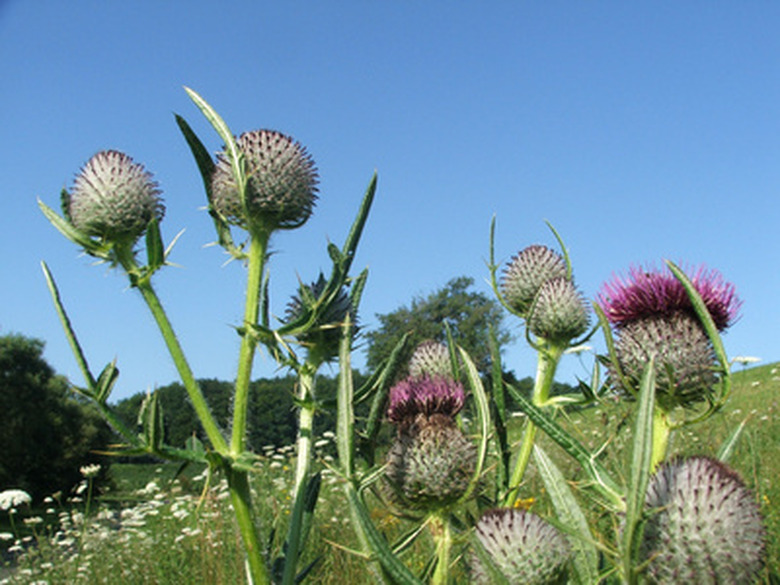Brush Be Gone Vs. Roundup
Brush-B-Gon is the commonly used short name for Brush-B-Gon Poison Ivy and Brush Killer manufactured by the Solaris Group, of San Ramon, California. Brush-B-Gon and Roundup, made by the Monsanto Corporation, of St. Louis, Missouri, are both post-emergent, systemic herbicides. Post-emergent means they are applied to weeds that are above the soil and growing. Systemic means they are absorbed by plants and move inside the vascular system. They are easily compared because Brush B Gon is a selective herbicide; Roundup is a nonselective herbicide.
Systemic Attributes
Both Brush-B-Gon and Roundup are systemic herbicides. Systemic herbicides spread through the interior of a plant. It takes them longer to kill brush, weeds and woody shrubs than it does contact herbicides that kill the parts of plants that they physically touch.
- Brush-B-Gon is the commonly used short name for Brush-B-Gon Poison Ivy and Brush Killer manufactured by the Solaris Group, of San Ramon, California.
- Brush-B-Gon and Roundup, made by the Monsanto Corporation, of St. Louis, Missouri, are both post-emergent, systemic herbicides.
Selective vs. Nonselective
Brush B Gon, a selective herbicide, kills brush, woody shrubs, trees and weeds with broad leaves, not grass or plants with narrow leaves and parallel veins. Roundup, a nonselective herbicide, kills all plants, grasses, brush and trees.
Brush-B-Gon Active Ingredients
Ortho Brush-Be-Gon contains a mixture of 24.5 percent of the active ingredient 2,4-D (2,4-dichlorophenoxy acid) and 11.7 percent of the active ingredient 2,4-5 (2,4,5-trichlorophenoxyacetic acid). Both 2,4-D and 2,4,5-T chemically resemble plant growth hormones called auxins. Once 2,4-D and 2,4,5-T are absorbed by plants, they inhibit the growth of the roots and shoots of plants with broad leaves; 2,4-D also kills aquatic weeds.
The herbicide 2,4-D was introduced in 1942. The patent has long since run out and herbicides using it as the active ingredient are sold under many brand names by many companies around the world.
- Brush B Gon, a selective herbicide, kills brush, woody shrubs, trees and weeds with broad leaves, not grass or plants with narrow leaves and parallel veins.
- Once 2,4-D and 2,4,5-T are absorbed by plants, they inhibit the growth of the roots and shoots of plants with broad leaves; 2,4-D also kills aquatic weeds.
Roundup Active Ingredients
Roundup contains the active ingredient glyphosate, which mimics and blocks part of a chemical compound that is central to plant and animal metabolism. Glyphosate moves within a plant, killing all of it by preventing its cells from dividing. Roundup kills all annual and perennial plants including weeds, grass and brush.
The Monsanto patent on glyphosate herbicides expired in 2000. Other companies now market glyphosate herbicides under different names, but Roundup remains the most well known. The European Union bans the use of Roundup and other herbicides containing glyphosate on the grounds that they are an environmental hazard.
Warning
Precautions should be taken in handling or spraying Brush-B-Gon or Roundup. They are toxic if they are ingested or inhaled in large amounts. Agent Orange, which was used to defoliate tropical undergrowth in Vietnam, was a mixture of 50 percent 2,4-D and 50 percent 2,4,5-T.
- Roundup contains the active ingredient glyphosate, which mimics and blocks part of a chemical compound that is central to plant and animal metabolism.
- The European Union bans the use of Roundup and other herbicides containing glyphosate on the grounds that they are an environmental hazard.
